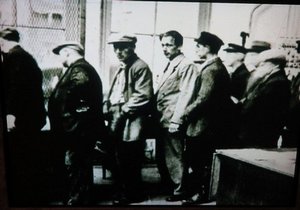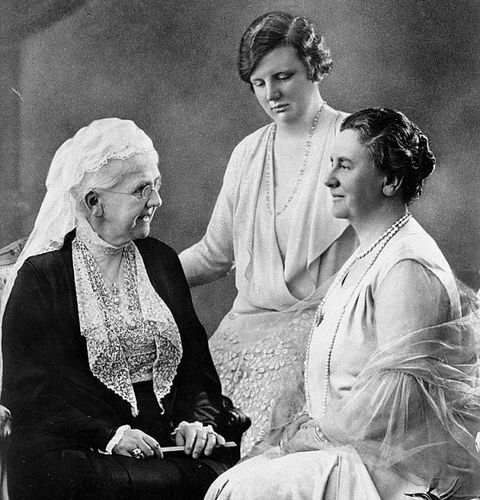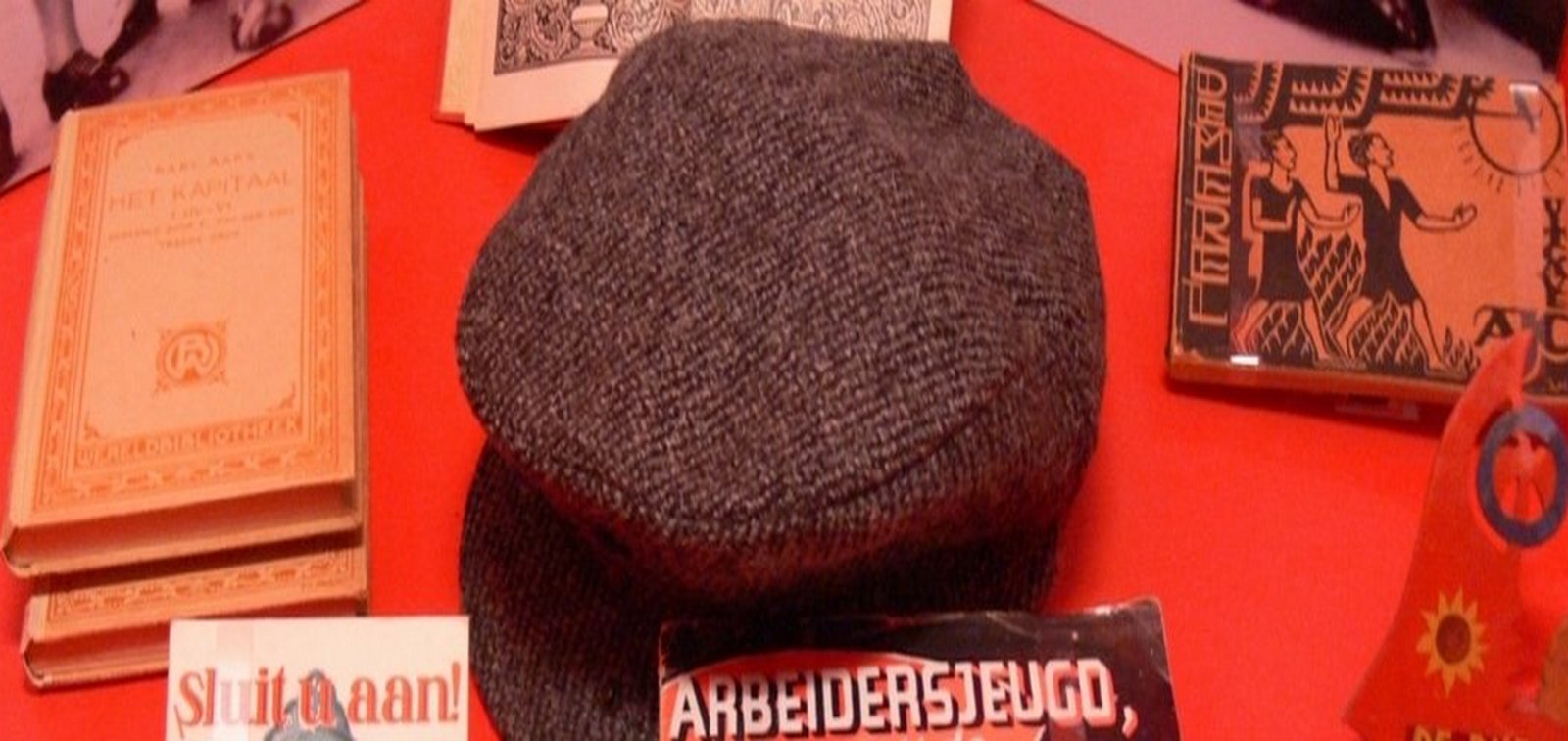The Netherlands during the Thirties
The 1930s

Unemployed labourers waiting
for unemployment benefit
During the years prior to the German invasion of May 10th 1940, Dutch society was in the grip of an economic crisis. There were huge discrepancies between rich and poor and the country was divided into different political and religious groups: the 'pillars'.
Unity

and Queen Wilhelmina around 1930
But despite these divisions, there was a strong sense of national unity. The symbols for this national pride transcended politics included: KLM (Royal Dutch Airlines), the fight against the water in the form of the Zuiderzeewerken (damming and drainage project), the Concertgebouworkest (Concert Building Orchestra) and the Dutch Royal House.
Respect authority
The Netherlands is a country that respects authority. The father in the family, the teacher in the classroom, the boss at work, the mayor of the city, the officer in the army and the Queen were all looked up to with respect.
Democracy under threat
Elsewhere in Europe, democracy was under threat from social and political conflict. There was Fascism in Italy, Communism in the Soviet Union, National Socialism in Germany, Falangism in Spain. But in the Netherlands, the people from the various pillars were living alongside each other in relative harmony.

Pillars
Protestant Pillar, saw themselves as the true Dutch. After all, the origins of the Dutch stemmed back to the 16th Century following a Protestant uprising against the Roman Catholic authorities. The Protestants were orthodox and they lived a frugal life without outward show.
Catholic Pillar, had to take second place in the Protestant Netherlands for centuries. But they started to emancipate. Their number was growing rapidly; their lifestyle more colourful and exuberant.
Socialist Pillar, were striving to elevate the working classes. They formed a single red family with its own trade union, youth movement, broadcasting organisation and publishing house.
Liberal Pillar, consisted of the upper middle classes who were keen on law and order, and advocated individualism and the free market economy.
Each 'pillar' had its own political party, its own clubs and even schools. There was also a separate newspaper for the Catholics, as well as one for the Protestants, one for the Socialists and one for the Liberal conservatives.

Remain neutral
All newspapers reported news of the growing power of Adolf Hitler in Germany, the persecution of Jews and the threat of European war. But the Dutch population presumed that their country – as in World War One – would remain neutral.